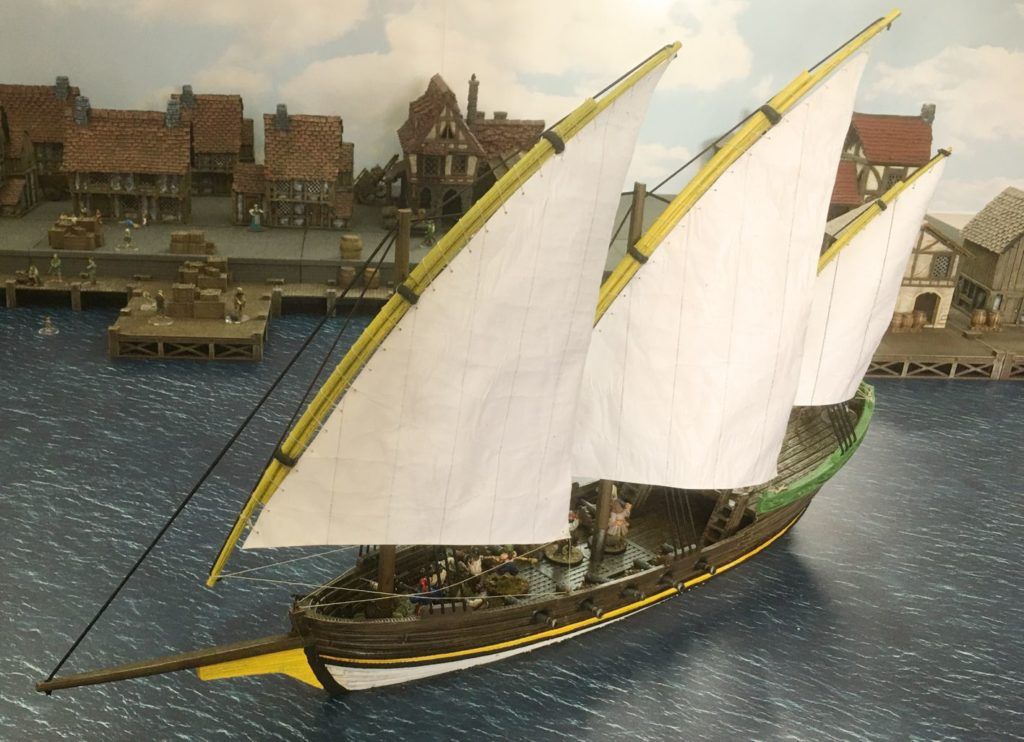
A xebec was a Mediterranean sailing ship that was used mostly for trading. Xebecs had a long overhanging bowsprit and aft-set mizzen mast.
Xebecs were ships similar to galleys primarily used by Barbary pirates, which have both lateen sails and oars for propulsion. Early xebecs had two masts while later ships had three. Xebecs featured a distinctive hull with pronounced overhanging bow and stern, and rarely displaced more than 200 tons, making them slightly smaller and with slightly fewer guns than frigates of the period.
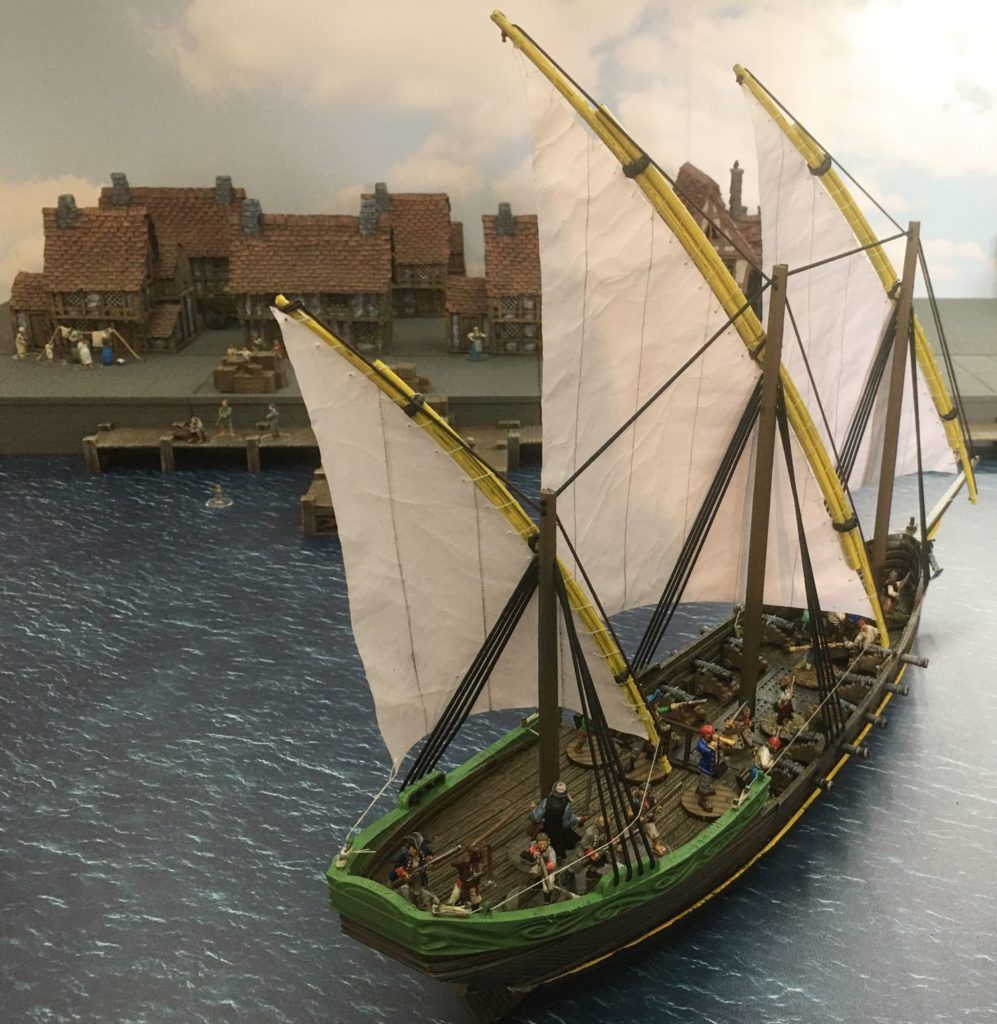
This 28mm model Xebec has been 3D printed using Esun PLA+ on an Ender 5 at 0.2mm layer height from a design by the very talented Iain Lovecraft. It was originally part of Iain’s ‘Pirates vs Cthulhu’ Kickstarter.
I am very much a gamer first, so the Xebec has been rigged for the tabletop with enough rigging to support the masts and sails, but not to much to get in the way of placing miniatures during a game.
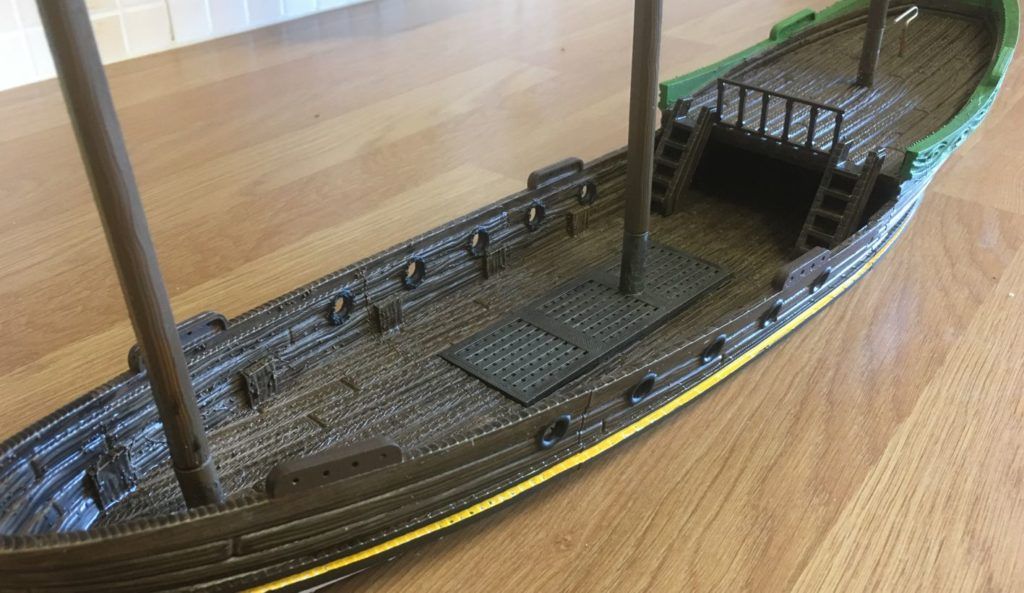
A few modifications were made to the model to facilitate rigging. In the photo above you can see that rigging ‘blocks’ have been added slightly behind each mast to attach the shrouds to. These were cut and shaped from 2mm MDF and plasticard. At the same time as doing this I drilled a hole in the stern section and added a tiller made from bent wire and glued a scratch built guard rail across the raised deck between the companionway stairs.
Once the model has been primed and painted I started preparing for rigging by drilling small holes using a handheld drill. Four holes were drilled in each rigging block and four holes were drilled in a row vertically at the top of each mast. A hole was also drilled in the bowsprit and at the top of each mast at 90 degrees to the other holes to facilitate fore and aft rigging.
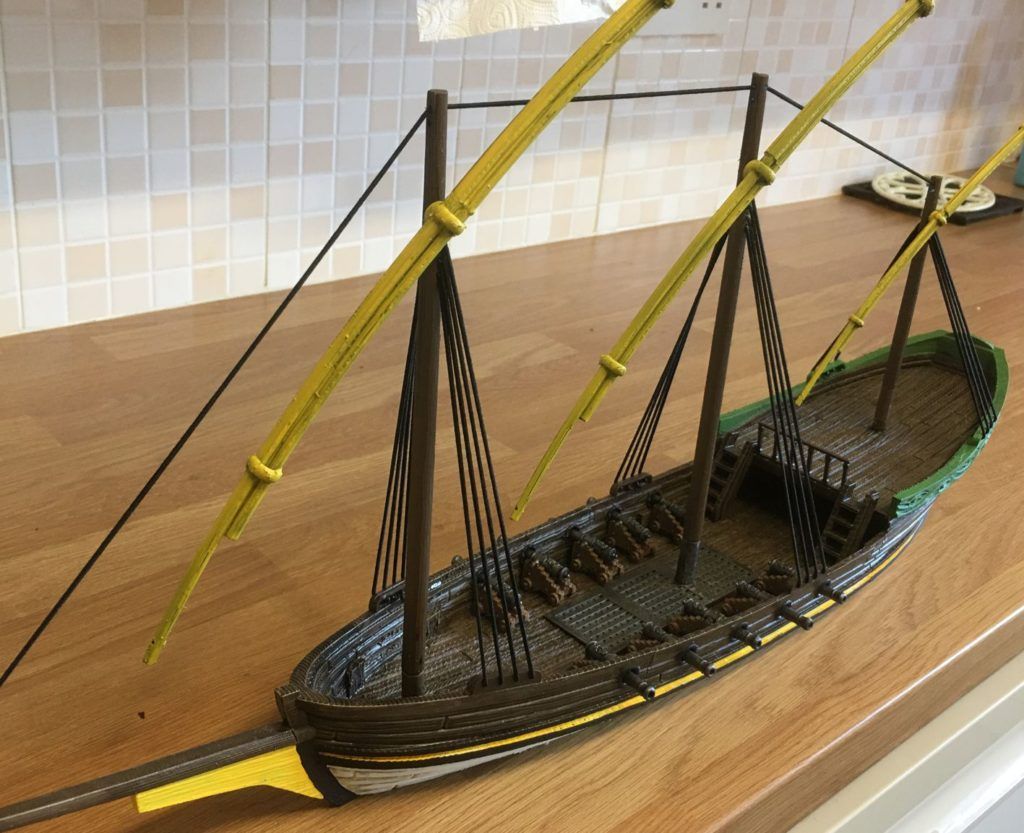
The standing rigging was made using 1mm black elastic cord, purchased from ebay. It makes a big difference using elastic cord as it adjusts and tensions very easily. The shrouds (side supports for masts) were made from single lengths of elastic, knotted at one side, fed through hole in mast and opposite rigging block and then knotted and trimmed off on opposite side. The elastic cord was threaded through the small holes using a length of fuse wire bent over to make a large needle. The fore and aft rigging was tied of at the bowsprit and then threaded through each mast head.
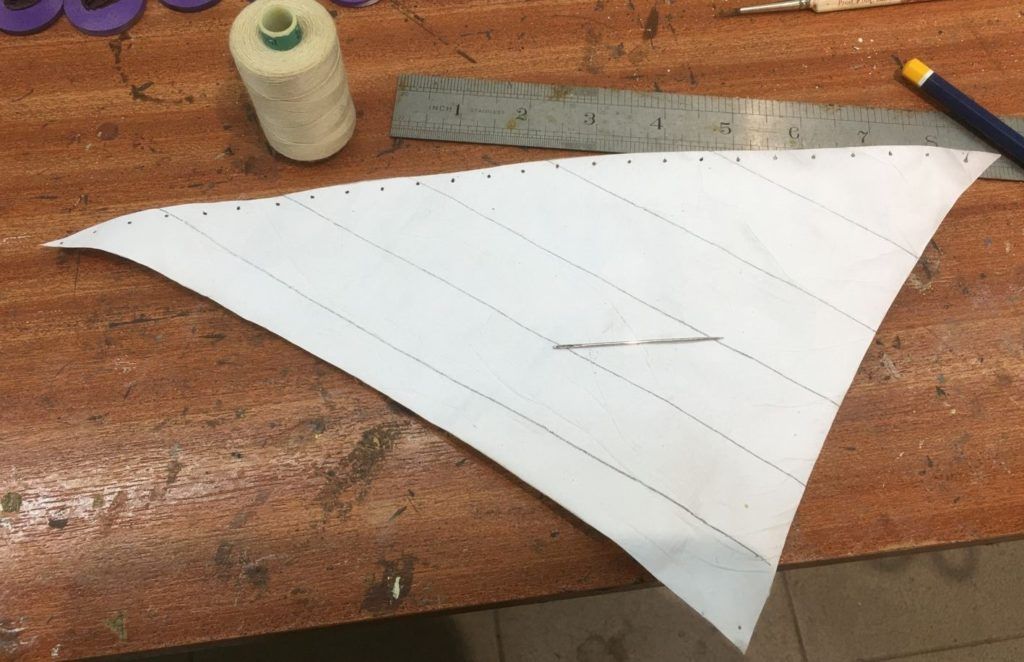
The sails were made out of plain copier paper covered with Japanese tissue paper. The shape of the sail was drawn onto copier paper, cut out, tried for size and adjusted where necessary. One side at a time the paper was brushed all over with watered down PVA glue and then a sheet of Japanese tissue paper was put on top, smoothed down carefully and left to dry. When both sides had been covered and dried lines are drawn with a sharp pencil on both sides to represent where the sail cloth has been sewn. A sharp needle is used to make a row of regular spaced holes to enable it to be attached to the spar. A hole is also made at the corner to attach some running rigging.
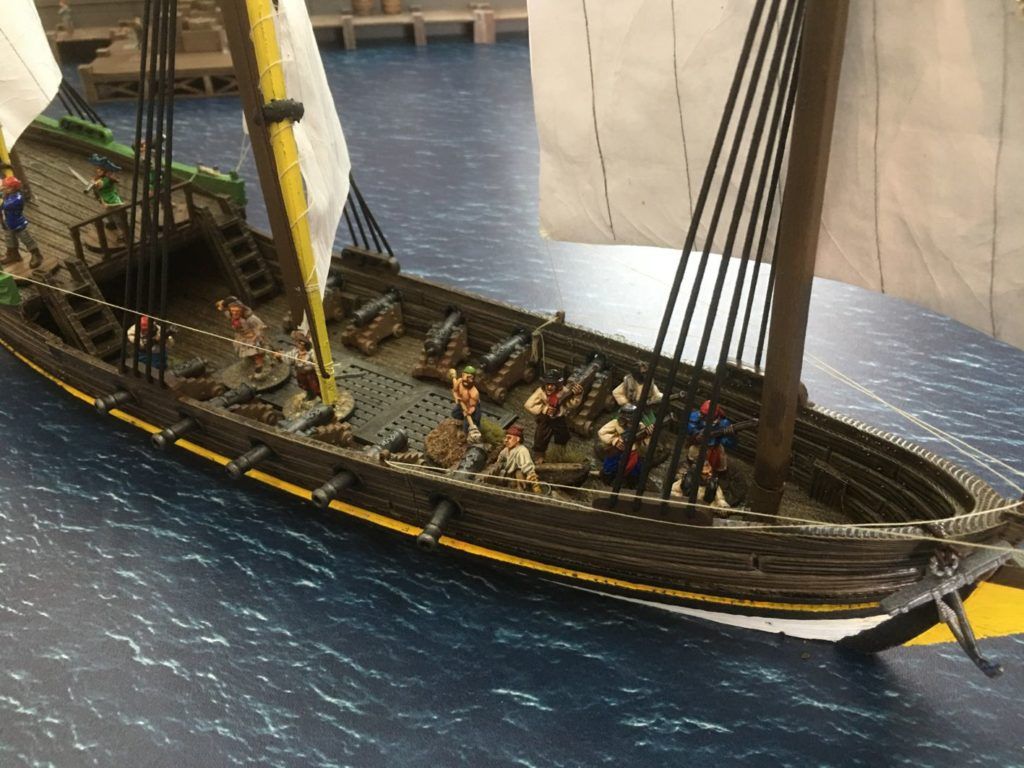
The sails have been ‘sewn’ onto the spars using a length of jute coloured thread and a needle. The ends are tied and sealed with a blob of superglue.
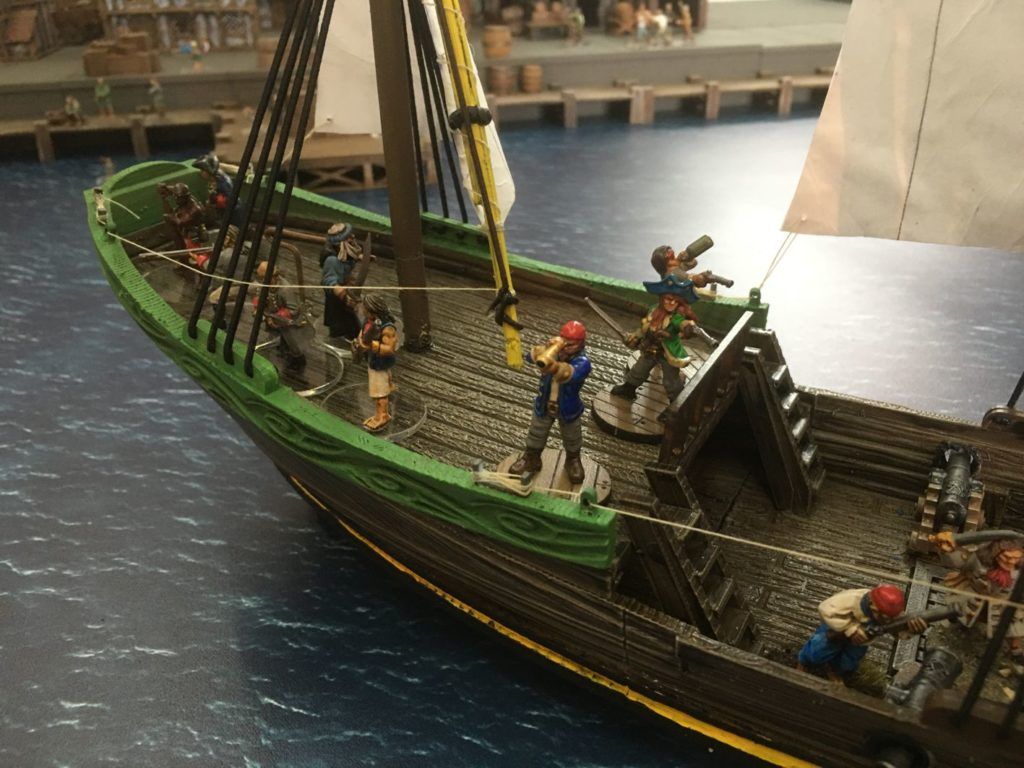
Once the sails have been attached, the spars are glued to the masts and a length of 1mm black elastic cord is passed through a hole in the top of each past and tied off at the end of each spar to represent the rigging supporting movement of the spars.
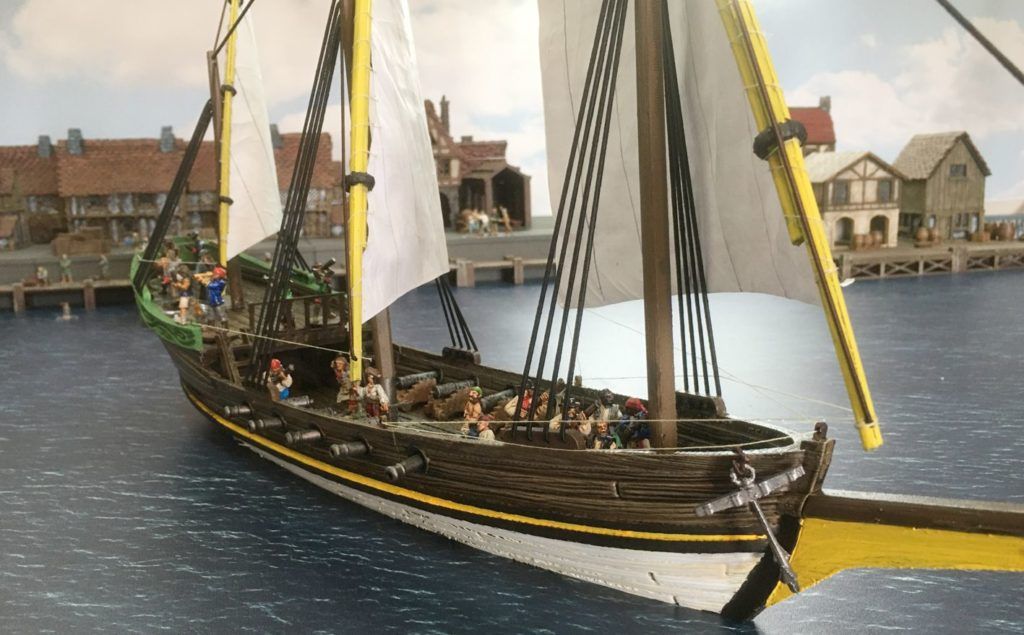
The anchor has been attached to a length of 1mm elastic cord. It has been glued in place and the anchor rope glued down in a neat coil on the deck.
Finally, using a needle, some jute coloured thread is passed through the holes in the corner of the sails, tied off and run back to model cleats that were added to fix the running rigging that sets the angles of the sails.
The ship is now ready to manned by Barberry Pirates or a prize crew and to set sail on many a tabletop adventure.

If you need a crew, be sure to take a look at the Swashbuckling Adventure’s range designed by Iain Lovecraft

0 Comments